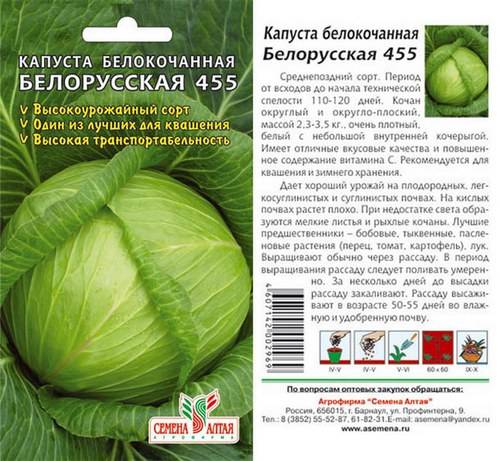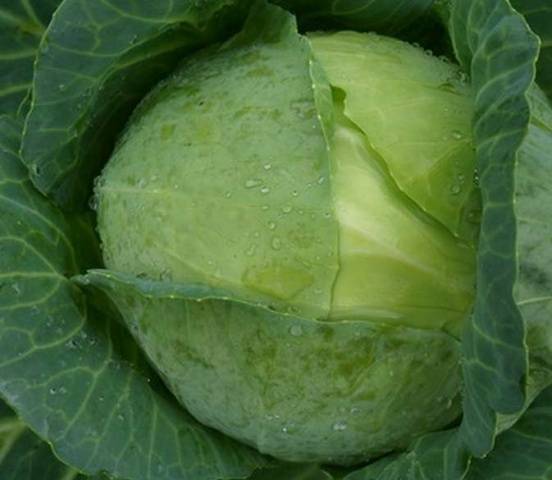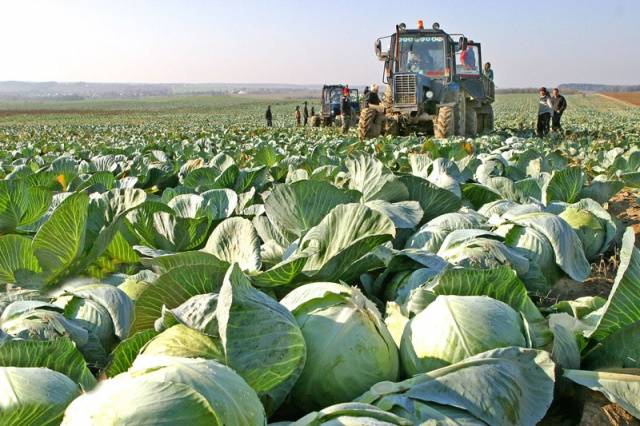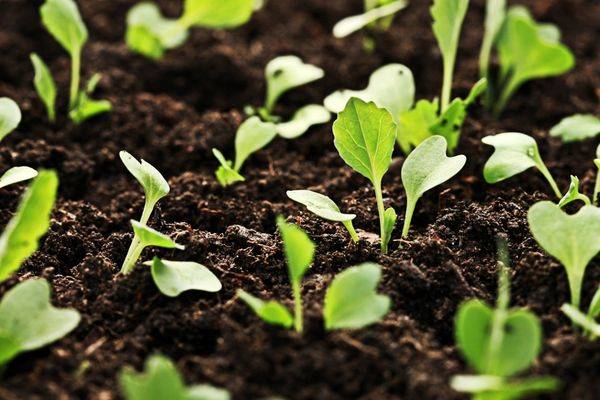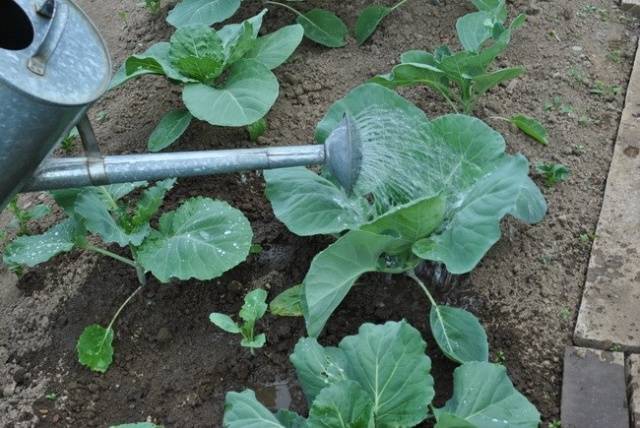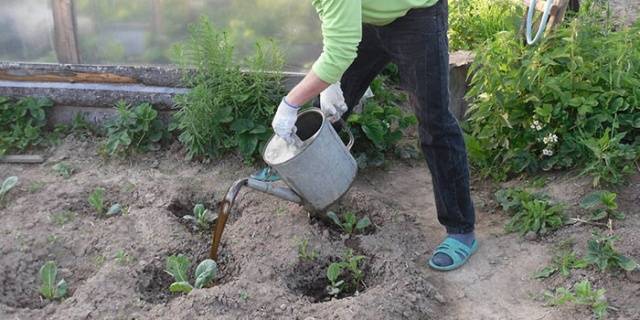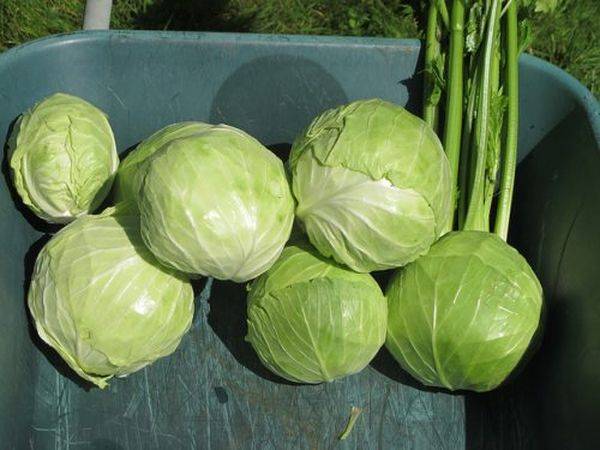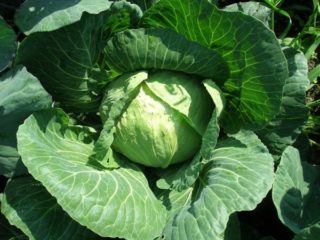Content
White cabbage is one of the oldest vegetable crops. It has been cultivated since the 20th century AD in Ancient Rome and Ancient Greece. But in those days, the vegetable did not have heads of cabbage. Cabbage appeared due to cross-pollination of biennial plants of the family.
Cabbage Belorusskaya is a product of breeding work of Russian seed growers. For the first time it became known about the variety in 1937. Many years have passed since then, but the popularity of the frost-resistant and fruitful variety has not fallen. On the contrary, new options have appeared - Belorusskaya 85, Belorusskaya 455 and other varieties. The article will give a detailed description and features of growing cabbage.
Description of the variety
White cabbage variety Belorusskaya 455 belongs to cold-resistant, light-loving vegetable crops. Seeds germinate at a temperature of +5 degrees. The plant freely tolerates frosts within -4 degrees.
To plant white cabbage, you need to choose an open place. This will ensure less insect damage. In addition, an excellent harvest is formed with a long daylight hours.
Late-ripening variety of white cabbage. Heads of cabbage reach the technical one at Belorusskaya 455 in 120-130 days, at Belorusskaya 85 a little more - 140-150 days from the moment of germination. The root system is weak, located in the upper soil layer at a distance of 25-30 cm. And the outer stump itself does not exceed 10 cm.
Leaves and head of cabbage
- The Belorusskaya variety stands out for its large dark green integumentary leaves with a waxy bloom. They are round-flat in shape with a smooth surface. The edges of the leaves are medium waviness. The veins are thin, almost invisible.
- The leaves forming the head of cabbage are light green, bleached by the time of technical ripeness. This can be clearly seen on the section of the cabbage. There is no space between the leaves of the mail, so the heads of cabbage are tight, dense. The heads of cabbage are so tight that hail cannot break through them.
- According to the description of the Belarusian cabbage variety, the rosette is raised above the ground, semi-spreading, reaches a diameter of 90 cm. This must be taken into account when planting seedlings in the open field. Belarusian cabbage quickly sets heads of cabbage at a temperature of 20-25 degrees.
In the heat of July, when the air temperature is above 30 degrees, the formation of heads of cabbage slows down. - During this period, a sprinkler should be installed over cabbage ridges to cool the soil and air around the plants.
- The weight of heads of cabbage variety Belorusskaya 455 reaches 4-4.5 kg, subject to the standards of agricultural technology, it can be even higher. The yield of the variety per square meter is about 8 kg. Cabbage variety Belorusskaya 85 is less productive, the weight of cabbages is from 2.4 to 3 kg. Both types have excellent taste.
Characteristics
Whichever vegetable variety is considered, there are always pros and cons.
Positive sides
Based on the description of the Belarusian cabbage, gardeners highlight the advantages of the variety, which they write about in the reviews:
- High productivity.
- Excellent taste of cabbage, versatility of use.
- Dense heads of cabbage do not crack even in technical ripeness.
- Excellent transportability.
- It is not a hybrid, so you can get your own seeds if you wish.
disadvantages
If we talk about the disadvantages of the Belarusian cabbage variety, then it is rather a weak immunity to diseases such as keela, vascular bacteriosis.
Among the minuses it should be noted:
- pests adore her;
- requires abundant watering;
- does not tolerate a transplant.
Despite the shortcomings, Belarusian cabbage is loved for its excellent taste and useful properties.
Growing seedlings
To get a good harvest, the seeds of Belorusskaya cabbage are sown in mid-May. Such a sowing period allows you to get heads of cabbage, suitable for processing and storage. To obtain an earlier harvest of white cabbage, you can sow some of the seeds in early May.
Before sowing, the planting material is not soaked. But it will not hurt to process it in a pink solution of potassium permanganate. The seeds of the variety are sown in fertile soil, pre-filled with boiling water, to a depth of no more than 1 cm.
Seedlings appear together on the 4th or 7th day. Immediately, you need to provide the seedlings with optimal lighting, otherwise the Belarusian cabbage will stretch out, which negatively affects the yield.
You can sow cabbage seeds in a nursery or immediately in separate containers so as not to dive. In this case, 2-3 seeds are placed in each glass. When the plants grow up, leave one, the strongest seedling.
Landing in the ground
From the nursery, Belarusian cabbage is planted in mid-June. Healthy seedlings should have a thick and strong root slightly thicker than a pencil and 5-6 leaves.
Plants are planted on loamy, well-fertilized soil in an open area. If you suspect it has a lot of acidity, add wood ash before digging.
The best location for cabbage beds is north to south so that each plant gets enough warmth and light. They are engaged in planting in the late afternoon, so that the seedlings have time to cope with stress before sunrise. If it is raining, then you can plant seedlings of Belarusian cabbage in the afternoon.
Cabbage varieties Belorusskaya 455 are planted on medium-height ridges in two rows. The distance between the ridges should be at least 50 cm. The holes are made according to the 50x50 scheme. A smaller distance will result in overlapping leaves.
The plant is lowered into the wet ground to the first leaves, the ground is well squeezed and watered. If hot weather is expected the next day, it is advisable to plant the planting for two days.
Features of care in the ground
Caring for the Belarusian cabbage variety is simple, novice gardeners can cope with it. But we will pay attention to some points.
Watering requirements
White cabbage Belarusian is demanding not only on fertile soils, but also on watering. The root system must always be moist.
- It is better to water in the late afternoon, when the sun's rays do not burn the plants.
- In the first days, the procedure is repeated daily. One root needs 2 liters of water. Seven days after planting, the earth is not loosened. Then this is done before watering so that the water seeps faster to the root system.
- Watering white cabbage of the Belorusskaya variety is stopped 10 days before the heads of cabbage are cut.
Weeding and loosening
During the season, remove and weeds... After all, they are the breeding grounds for diseases and pests.
Continuous weeding of cabbage will help to get rid of weeds and will allow you to spot insect pests immediately.
Top dressing
As for feeding, it is carried out in the same way as for other varieties. The most commonly used infusion of mullein, chicken droppings, fermented grass. White cabbage of the Belarusian variety responds well to foliar feeding with ammonia, iodine. Once a week, it is advisable to sprinkle the plants with wood ash.
Pest control
In the description it was indicated that the Belorusskaya variety is especially fond of insects. Frequent guests are midges and caterpillars. You can get rid of them with a soapy solution. They are sprinkled with cabbage, and powdered with dry ash on top.
Special means are used to get rid of the caterpillars. Cabbage processing is carried out in the late afternoon in dry, calm weather.
Caterpillars are the "babies" of the cabbage butterfly. She is afraid of the smell of marigolds. These flowers are planted between cabbage seedlings. The smell of valerian frightens off the butterfly. This medicine (vial) is diluted in half a bucket and sprayed on the planting.
Disease prevention
Since the Belorusskaya variety is often affected by the keel, it needs to be planted in a new place every year. In the fall, after harvesting, cabbage roots should never be placed in the compost heap. Even if there are no signs of illness, all the remains of the cabbage are destroyed.
Variety Belorusskaya 455 has low immunity to vascular bacteriosis. The people call this disease black rot. You can see it by its black veins.
Another problem is wet rot, which appears when plants are affected by vascular bacteriosis. Having noticed the disease, the plants need to be pulled out and destroyed.
Harvesting the harvest
The technical ripeness of the variety occurs in the last days of September or early October. As we said, watering stops in two weeks. Cutting begins on a sunny day in the afternoon, so that the sun eats up the frost or dew. The chopped cabbage is laid out on the flooring for drying, and then put away for storage.
The first thing to decide is how the chopped cabbage will be used. If it is intended for winter storage, then a long stump is left when cutting. For her, the head of cabbage is hung in the cellar or basement. All other forks are cut down without an external stump. Here they are, handsome heads of cabbage, in the photo!
